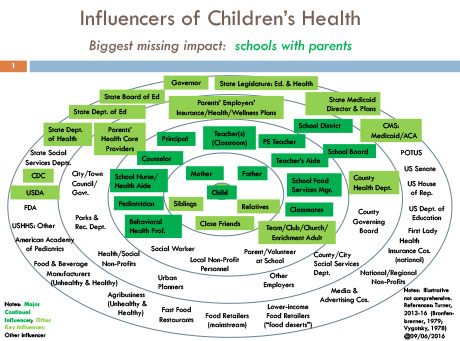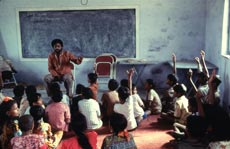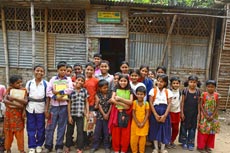Founder’ Story
In 2006 I began thinking of a different future.
I had been immersed in working on business start-ups for 13 years, including most recently co-founding a highly successful postsecondary education company. I knew that I wanted to stay involved in education, but I wasn’t sure how. At a minimum, I wanted to do something that could help dramatically improve people’s lives in both the US and globally.
Since I wanted to remain in education, and possibly get involved in founding a university and developing public policy, earning a PhD made sense. As I moved into a part-time consulting role with my education company in 2007, and as my children left home for college, I had the time to work on my doctorate and figure out a new career path.
At first, given my international, IT/ICT and higher education background, I thought I should consider starting a truly global nonprofit university. Key systems would be connected via the Internet, and tuition would be based on the student’s ability to pay, depending on local country salary rates for the student’s future career. I began attending the Comparative and International Education Society annual conference in 2007 to learn about trends in higher education in developing countries. In order to understand higher education’s country contexts, I also attended presentations on preK-12 education in developing countries. I was shocked by the small percentage of students, who ever even made it through high school and qualified to attend a university—in many cases only a few percent of children in a country. I decided that I should first try to help improve preK-12 education in developing countries, so that more students were qualified to attend a university, rather than working right away on increasing access to affordable higher ed in those countries.
After the company I co-founded went public and my work with it ended in 2009, I finally had more time and financial independence to become a social entrepreneur. As I prepared to attend my first conference as a social entrepreneur in 2010, I realized that I should have some sort of brand and website, and not just a business card with my name and personal contact information. I combined the words education and ingenuity to create Edunuity. (Some people have trouble pronouncing or spelling Edunuity, but I’ve been sticking with the name—so far.)
For me, having the most impact on the largest number of people is a key personal goal. So I wanted to create a clear mission to keep Edunuity focused on some of humanity’s biggest challenges affecting tens or hundreds of millions of people in the US and globally, and see if I could make a major contribution. This is how Edunuity’s mission arose of empowering over 100 million people by 2030 to significantly improve their lives. In order to achieve this ambitious goal, I developed the SEAS Change model. Edunuity will always use approaches, which are scalable, effective, affordable, and self-funding: S-E-A-S.
While this was ambitious, I felt that it was doable. I had faced many challenges in life, including some daunting business problems. Many times, experts had told me that we would never be able to make certain dramatic changes in the way things were done and achieve my ambitious goals, yet we eventually succeeded. I realized that experts are sometimes trapped by the boxes of their previous experiences. Unless they work hard to question their assumptions, they may become complacent and too accepting of the status quo, and will have a hard time developing breakthroughs and disruptive innovations (Christensen, 1997; Mezirow & Associates, 2000). I have again found as I moved into social entrepreneurship that my minimal prior experience in public health and social issues has been a major advantage. It means that I have more homework to do, but I have less preconceived notions. In addition, my liberal arts, MBA and doctoral education combined with my work experience to help me think across industries and approaches to develop interdisciplinary, multi-systems solutions.
I was also unsure whether the approach I was taking would fit into any existing nonprofit/NGO category. I didn’t feel that what the world needed was “another education nonprofit.” Instead, I increasingly saw Edunuity’s role as that of social innovation catalyst. In other words, rather than creating an organization which would develop and implement its own programs, it would make more sense to figure out what needs to be done, then partner with existing organizations and authorities to develop, advocate for and implement appropriate policies and programs. A social innovation catalyst combines elements of think tanks, foundations, social nonprofits, lobbying and public advocacy firms, consulting firms, and other organizations, and may be an emerging new category of social entrepreneurship.
As I researched some of the biggest problems in preK-12 education in developing countries, I tried to figure out how I could contribute uniquely, adding much more value and accelerating progress much faster than would have happened without my participation. I discovered that one key obstacle to increased literacy in developing countries was the absence of children’s books and other print material in homes and schools. While literacy NGOs such as Room to Read, Save the Children, and AKDN were thankfully putting in many libraries in schools and communities, because they had limited donor funds, they were unable to make a major sustainable dent in the problem on a worldwide basis. As I visited with literacy NGOs including the world’s largest education NGO, Pratham, and visited schools in poor areas in India, I became convinced that a library social enterprise model had significant potential. In this approach, a local “library entrepreneur” takes out a microloan to purchase children’s books in local languages, and then rents the books out at very low fees to families. As a natural extension of renting out books, this social entrepreneur inevitably becomes involved more broadly in literacy-building efforts, such as training semi-literate and illiterate parents in how to improve their children’s reading, and working with school officials to increase reading activities. They become self-funding library-and-literacy entrepreneurs. This became Edunuity’s “Libraries and Literacy for All” initiative.
But I also wanted to tackle major social problems in the US—to give back in my own country as well as globally. I joined Social Venture Partners in 2010, and in that same year, found out about Operation Tone-Up®, an Arizona-based childhood obesity prevention program in elementary schools. I already knew that childhood obesity was a major problem in the US, but I had not fully realized the horrific health impact and trillion dollar economic cost of obesity and other preventable chronic health conditions, until I started looking into Operation Tone-Up (OTU). I spoke with the program’s creator, Tony Lamka, and reviewed the program materials, and its impressive physiological data from pre- and post-intervention evaluations. I also visited schools where OTU was implemented. The Operation Tone-Up intervention was very effective at improving children’s health short-term, but did it have a long-term impact on kids’ nutrition and physical activity behavior, especially since the program wasn’t being continued in middle schools? This became the basis for my doctoral dissertation.
Unfortunately, my dissertation research showed that the program’s impact faded over time, after students had no longer participated for several years. But rather than throwing up my hands in frustration, I realized that there was a solution. We need to treat health and physical education as seriously as we treat any other major subject at school. Health ed and PE need to become core subjects, which everyone must learn. And since what gets tested gets taught, we must also evaluate the outcomes of health ed and PE, and hold students and schools accountable for them.
We can use the kinds of approaches and materials which Operation Tone-Up has developed and has proved to work, but we must also follow-through on those approaches and materials over time in age-and-grade-appropriate ways, not just as a brief intervention only in elementary school. Curriculum design theory confirms this. It indicates that health interventions—indeed, short-term programs in general—lack the essential curriculum requirements of duration (part of scope & sequence), continuity (repetition in developmentally evolving ways over time), integration and articulation (linked with other subjects and across years), and balance (adequate attention devoted to a variety of subjects) (Bruner, 1960/1977; Ornstein & Hunkins, 2009).
What is more, we cannot settle for superficial PE, without adequate aerobic and strengthening activity to build up the heart, body and brain. And we cannot tolerate superficial health education which does not improve the healthiness of students’ behavior. Schools need to be given the resources to offer these subjects in ways that fundamentally impact students’ lives, and help truly prepare children and adolescents for a healthy adulthood. At the same time, we need to hold students and schools accountable, just as we do for student learning in reading, writing, math, science, and social studies.
If we aren’t willing to treat health ed and PE this seriously, we should expect many more decades of increasing chronic health conditions, and health care costs eating up ever more public funds, which should have gone to education, tax cuts, and other areas. We will continue in the current downward spiral, with each year of decline making it harder to reverse course.
The same applies to civics and personal finance. Our students need to be better prepared to manage their own finances and to participate more effectively and with civility in the democratic process. Our students need to be health-ready, citizen-ready, and finance-ready, not just college- and career-ready. Health ed, PE, civics and financial literacy should be considered mandatory parts of the core curriculum.
What is more, potential solutions to health, financial, civic and other political and socioeconomic problems require public policy change, taxpayer investment, and long-term commitment across many sectors of society over decades. We need to start with parents before their children are even in school, continue with children throughout preK-12 education, and then follow-through with lifelong learning with them as adults. We therefore need to persuade and work with a broad coalition across education, health, business, social services, public safety, tax and finance, health insurance, and other areas over many years.
This has become Edunuity’s Lifelong Life-ready Skills & Behavior Education focus area.
(Click here for a larger, downloadable pdf version of Influencers of Children’s Health.)
In addition to the above two focus areas, where I plan to devote my time as a social entrepreneur, I also realized that there were thousands of areas, in which I would not have time to get involved, but which provided important services to our communities. By the same token, other non-profits are active in those areas. How could Edunuity assist them?
I realized that if Edunuity could help develop a strategy to increase total charitable giving in the US, other nonprofits would have many more resources with which to achieve their goals. As a result, our third area of focus became increasing charitable giving by 0.2% of US GDP—at least $30 billion annually in additional funding for nonprofits. We can do this, by changing Americans’ thinking about how much we should give, shifting individuals to calculating how much they should give based on a percent of their income (The Center on Philanthropy, 2008). Edunuity calls this Percent Giving, and this is our third focus area. Edunuity is not yet actively working on this area, but we hope to start doing so in 3-5 years.
More information on Edunuity’s initiatives is found throughout the website, particularly under each focus area. I believe that there is tremendous potential to significantly improve the status quo, and God willing, I hope to have many more years to work on these issues with you. I look forward to your feedback, advice, and participation!
Scott





